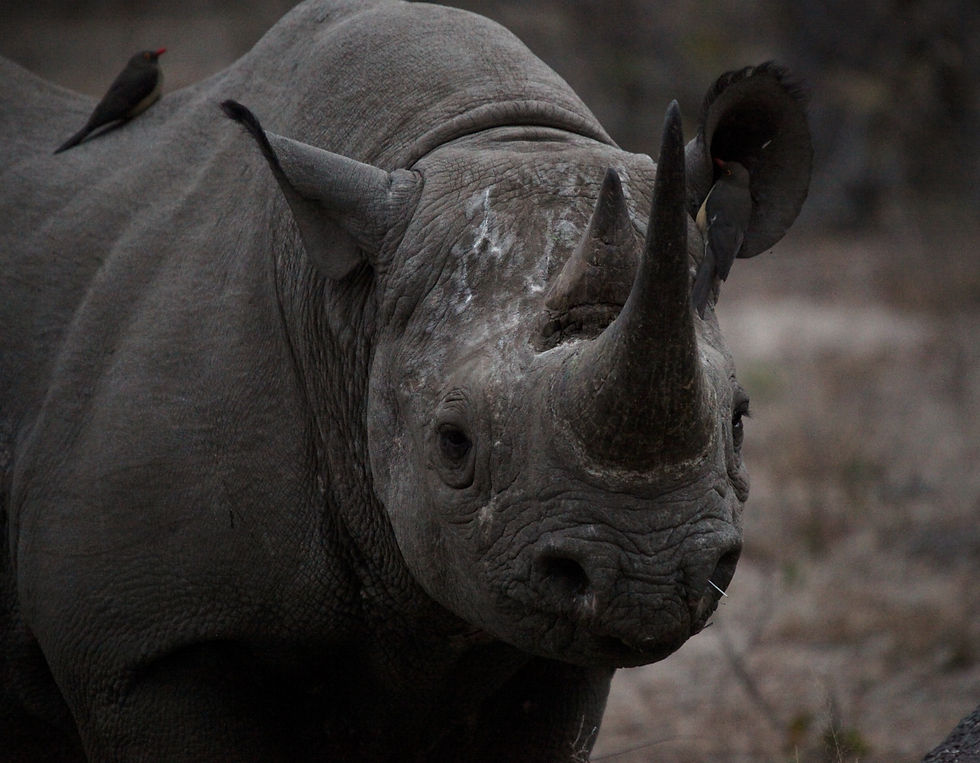Egyptian Vulture Returns to UK After 150 Years
- Jenny Donath
- Aug 26, 2021
- 3 min read
Updated: Oct 12, 2021
Jenny Donath reports on the unusual sighting of a Egyptian vulture on the Isle of Scilly despite its rapid global decline.

Photo by Aurore Murguet
The rare spotting of an Egyptian Vulture on the Isles of Scilly has caused astonishment among dedicated birdwatchers.
The Egyptian vulture, which was perceived as a sacred animal by Egyptian pharaohs and represents the letter A in the Egyptian hieroglyphic alphabet, was sighted on the Isles of Scilly back in June of this year. The bird was first spotted over St. Mary’s, and had later moved on north to Tresco.
Will Wagstaff, a bird guide, recorded the spectacular bird with his camera, which promptly resulted in amazed birdwatchers travelling to the Isles to catch sight of it themselves. There are only two other recorded sightings in the UK, in 1825 and 1868, as the bird usually resides in warmer regions. Ecologist prof. Stuart Bearhop states that seeing an Egyptian vulture in the south of the UK “is an incredibly rare sighting”.
The Egyptian Vulture?
With a length of 65 centimetres and a weight of only 1.9 kg on average, the Egyptian vulture, formally known as Neophron percnopterus, is one of the smallest vultures in the world. Its plumage is a mixture of black flight feathers and white neck feathers, but they are usually tinged in red and brown since the vulture tends to rub itself in iron-rich mud. Despite its small statue, they can reach a maximum wingspan of roughly 170 centimetres, and have a life expectancy of at least 37 years in captivity.
The Egyptian vulture’s typical diet is carrion such as livestock and small wild animals, as well as insects and plants. To get easy access to its food sources, it usually nests and hunts nearby. Its intelligence can be observed by its use of tools, which is common for only a few birds. For instance, they sometimes feed on large eggs such as ostrich eggs, which they crack open by throwing stones at them.
The vulture usually nests amongst the rocky cliffs found in the dry areas or deserts of Southern Europe such as Spain or Turkey, and rarely settles in parts of Italy, Greece or France. Groups can also be found in the western and southern parts of Asia, or in the north of Africa. In August or September, the European populations migrate to warmer regions such as the southern grass regions of the Sahara.
Regarding its breeding behaviour, the Egyptian vulture is a solidary bird. Usually nesting in groups, they begin reproducing when they are four to five years old. They lay two eggs which take around six weeks to hatch. The chicks remain in the nest for another eighty days on average.
A Rare Phenomenon
The Egyptian vulture is one of many endangered bird species, with only 12,000 to 23,000 mature individuals worldwide of which 25-49% reside in European regions, but the overall number is decreasing. For instance, for the past thirty years, the colonies on the Balkans have experienced a yearly decline of 7%.
This massive decline is due to a variety of threats such as accidental poisoning through contaminated livestock carcasses which were fed with medicine. Furthermore, in some areas, highly toxic pesticides such as strychnine are used to regulate carnivores. In other regions poachers are responsible for the decline in vultures, as they attempt to sell body parts for spiritual uses.
Concerns have been raised surrounding whether the bird simply got lost and crossed the English Channel by accident, or whether more serious matters like rising temperatures due to changing climate gave reason for the vulture to fly northwards. Either way, it was a welcome visitor while it was here.
We are a not for profit socio-ethical impact initiative advocating for topics that matter, whilst supporting wider planetary change and acknowledgement. Support our journalism by considering becoming an advocate from just £1.










Kommentare